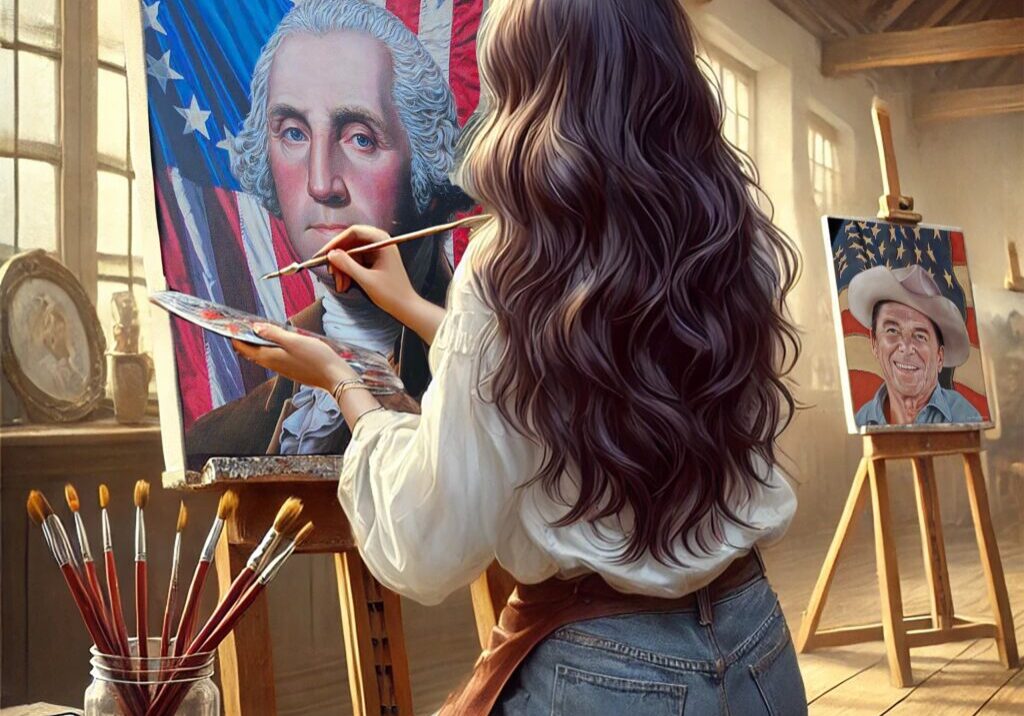
Woodcuts and War Cries: How Art Stoked the Fire of Rebellion
Before America had a national anthem, it had visual noise – loud, rough, often carved on scraps of wood. In the decades before the Revolution, woodcut prints served as the eyes and ears of rebellion. They weren’t delicate engravings or formal portraits. These were rugged images cut deep into cheap blocks and printed fast for impact. They yelled in ink what rebels whispered in taverns. Woodcut art in colonial America wasn’t created for galleries – it was designed to provoke.
Thick lines, jagged contours, and bold contrast gave these prints an immediacy that even words couldn’t match. Most colonial towns lacked full-time artists, but they had access to printers – and printers knew someone with a blade and a steady hand. From coffins to crowns, rattlesnakes to riots, these images became symbolic shorthand for a growing sense of injustice. The mural’s Freedom section makes careful use of this aesthetic. You’ll notice handbills posted crookedly, one peeling with a heavy black-ink cut of a musket and the word ENOUGH. Another, partially obscured by a shadowed column, shows a marching line of crude stick-figure soldiers – faces hollow, eyes defiant. These are not meant to be realistic.
They are meant to rally. The mural’s use of these woodcut-like textures honors a moment when American art was less about beauty and more about burning clarity. One of the most iconic uses of this medium came from Paul Revere’s depiction of the Boston Massacre. Though technically an engraving, Revere’s print drew from the raw visual language of the woodcut: simplified forms, stark lines, emotional composition. In it, British soldiers fire into a passive crowd – a distortion of the actual event, but a masterstroke of visual storytelling. Copies spread quickly across the colonies, igniting fury far beyond Boston’s borders. The blood in that image wasn’t just metaphor – it was mobilization.
Colonial woodcuts didn’t just show violence – they codified virtue. Liberty trees, severed chains, and crude allegories of Britannia versus America gave shape to ideals people were just beginning to articulate. When audiences couldn’t read, they could recognize. That was the genius of woodcut art: its legibility. It could be understood at a glance, even by candlelight. These images were often printed alongside or within incendiary texts – sermons, speeches, declarations – but it was the image that lingered.
The art stuck to walls, minds, and memory. In this way, art didn’t follow the Revolution. It preceded it. It made resistance visible. It made patriotism feel personal. The mural captures this sensibility not just in subject but in style. Rough outlines, scorched edges, and asymmetrical layouts channel the visual chaos of a time when rebellion wasn’t polished – it was printed in haste. This was art as ammunition.
What modern viewers might see as “crude” was, for its time, cutting edge. These artists weren’t lacking in talent – they were maximizing tools. A pocketknife, a wooden block, a sheet of paper. That was the studio. That was the pressroom. That was the war room. And when we look back now, these prints aren’t just relics – they’re rallying cries caught in ink.
You can still feel the edge of the blade, and the urgency of the message. They didn’t just document revolution. They helped start one.

